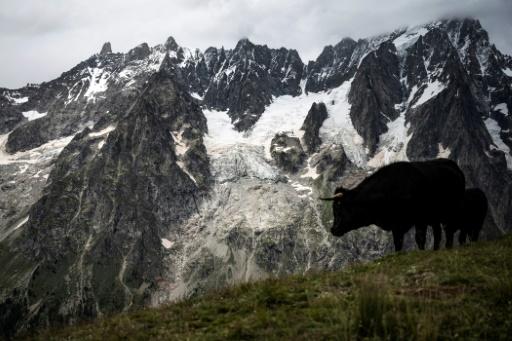A melting glacier on the Italian slope of Monte Bianco is being watched closely by scientists, who fear that rising temperatures pose a threat to the valley along its flank.
The Planpincieux glacier, located at an altitude of 2,700 m above the homonymous village, lies below the southern slope of the Grandes Jorasses (granite peaks of the mountain located on the Franco-Italian border line).
Qualified as “temperate”, the unstable glacier is melting, unlike the still frozen so-called polar glaciers that reach the rocky layer. This means that the Planpincieux could slide more quickly because it is sitting on a layer of water, which makes it dangerous for the Val Ferret, according to experts.
“We are facing a significant increase in temperatures, which accelerates the formation of the water layer under the glacier,” Valerio Segor, director of natural risk management in the Aosta Valley, located in northwestern Italy, told AFPTV.
Before, the Planpincieux glacier, thicker and less fractured, had a more stable position on the rock, said Paolo Ferret, a glacier expert based in Courmayeur – also in Italy – but as a consequence of the increase in temperatures caused by climate change, “moves only on a smooth surface, which makes it more unstable.”
The glacier slides slowly but surely, up to 1.5 m per day in extreme cases, said the specialist, while the Serac Whymper, a polar glacier that dominates it from a height of 4,000 m, slides between 2 and 20 cm daily.
In October, a huge 15,000 m3 block of ice broke off the Whymper, happily after authorities banned access to the trails below.

